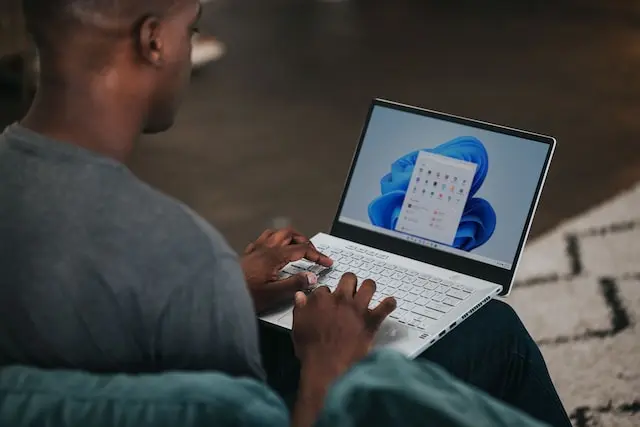In today’s rapidly evolving world, digital literacy has become essential for students as they prepare to navigate a technology-driven future. As technology continues to shape every aspect of our lives, students must develop a strong foundation in digital literacy. In this article, we’ll explore what digital literacy entails, how Windows can play a pivotal role in enhancing this skill set, and provide valuable tips for educators and parents on preparing students for the challenges of the digital age.
What is Digital Literacy?
Digital literacy encompasses a range of skills and knowledge that enable individuals to use, understand, and critically evaluate digital technologies effectively. It’s more than just knowing how to use a computer; it involves competencies such as information literacy, media literacy, online communication, and cybersecurity awareness.
Windows and Digital Literacy
Windows, the ubiquitous operating system developed by Microsoft, offers a powerful platform for fostering digital literacy among students. Its user-friendly interface, vast applications, and integration with the Microsoft Office suite make it an ideal choice for educators and learners. Windows provides a seamless environment for students to explore digital tools, collaborate on projects, and develop problem-solving skills. From mastering essential software to understanding file management, Windows can empower students to become confident and proficient technology users.
Tips on Preparing Students for a Technology-Driven Future
In today’s rapidly advancing digital landscape, equipping students with the right skills to thrive in a technology-driven world is paramount. Integrating the technology industry seamlessly into the curriculum can play a pivotal role in enhancing students’ digital literacy and preparing them for the challenges and opportunities that lie ahead. Let’s delve deeper into each tip to understand how educators can effectively prepare students for a technology-driven future.
- Teach Online Etiquette and Safety
Teaching students responsible online behavior is essential in a world where online interactions have become the norm. Educators should engage students in discussions about cyberbullying prevention, the importance of respecting others’ digital identities, and the significance of safeguarding personal information. By nurturing good digital citizenship habits, students are better equipped to navigate the virtual realm with empathy, respect, and resilience. Through workshops and open dialogues, educators can empower students to make informed decisions and create a safer online environment for themselves and their peers.
- Integrate Technology into Curriculum
Incorporating technology into the curriculum isn’t just about using computers in the classroom; it’s about transforming learning experiences. Educators can encourage students to harness digital tools for research, creation, and presentation by designing technology-based assignments and projects. Imagine students delving into online Benzinga.com databases to gather information, utilizing multimedia platforms to craft interactive exhibits, and collaborating with peers on virtual projects. This hands-on approach enhances students’ technological proficiency and cultivates critical thinking, problem-solving, and creativity—the cornerstones of digital literacy.
- Encourage Coding and Problem-Solving
Coding isn’t just for aspiring programmers; it’s a powerful tool for nurturing logical thinking and problem-solving skills. Introducing students to coding and programming concepts through platforms like Microsoft MakeCode offers them a hands-on experience building and designing within a digital space. As students create algorithms, troubleshoot errors, and witness the tangible results of their code, they develop a deeper understanding of technology’s inner workings. Coding ignites curiosity and experimentation, fostering a growth mindset essential for thriving in an ever-evolving technological landscape.
- Utilize Educational Apps
The Windows Store boasts diverse educational apps that can revolutionize the learning process. Educators can leverage these apps to engage students in subjects ranging from mathematics and science to language arts and history. Interactive simulations, virtual labs, and engaging quizzes make learning more captivating and personalized. For instance, students can explore complex mathematical concepts through interactive visualizations or embark on a virtual journey through historical events. These apps reinforce classroom lessons and empower students to take control of their learning journey, sparking a lifelong love for learning.
- Collaboration and Communication Tools
In a digitally connected world, effective communication and collaboration transcend physical boundaries. Teaching students to use collaborative tools like Microsoft Teams equips them with the skills needed for successful teamwork within and beyond the classroom. Through virtual discussions, group projects, and online brainstorming sessions, students learn to navigate the dynamics of digital interaction, share ideas cohesively, and work together harmoniously. These experiences mirror real-world collaboration scenarios, preparing students to integrate into collaborative professional environments seamlessly.
Conclusion
In an era where digital literacy is as critical as traditional literacy, preparing students for a technology-driven future is a shared responsibility of educators, parents, and society. By embracing the capabilities of Windows, educators can empower students with the skills and knowledge they need to thrive in a digital landscape. Remember, digital literacy is not just about using technology; it’s about understanding, analyzing, and harnessing it effectively.
As you embark on this journey, explore Microsoft’s Education Hub for comprehensive resources, training, and tools to enhance digital literacy in your educational community.
BIO
Elaine Bailey is a seasoned educational consultant and content creator specializing in technology integration in modern classrooms. With a background in instructional design, Elaine is passionate about enhancing digital literacy among students to equip them for the demands of the digital era. Through a variety of roles, including curriculum development and teacher training, Elaine has been dedicated to promoting innovative teaching methods that foster critical thinking, creativity, and effective communication in the digital age. As an advocate for 21st-century learning, Elaine’s work centers on empowering educators and students alike to embrace the power of technology for enhanced educational outcomes.
